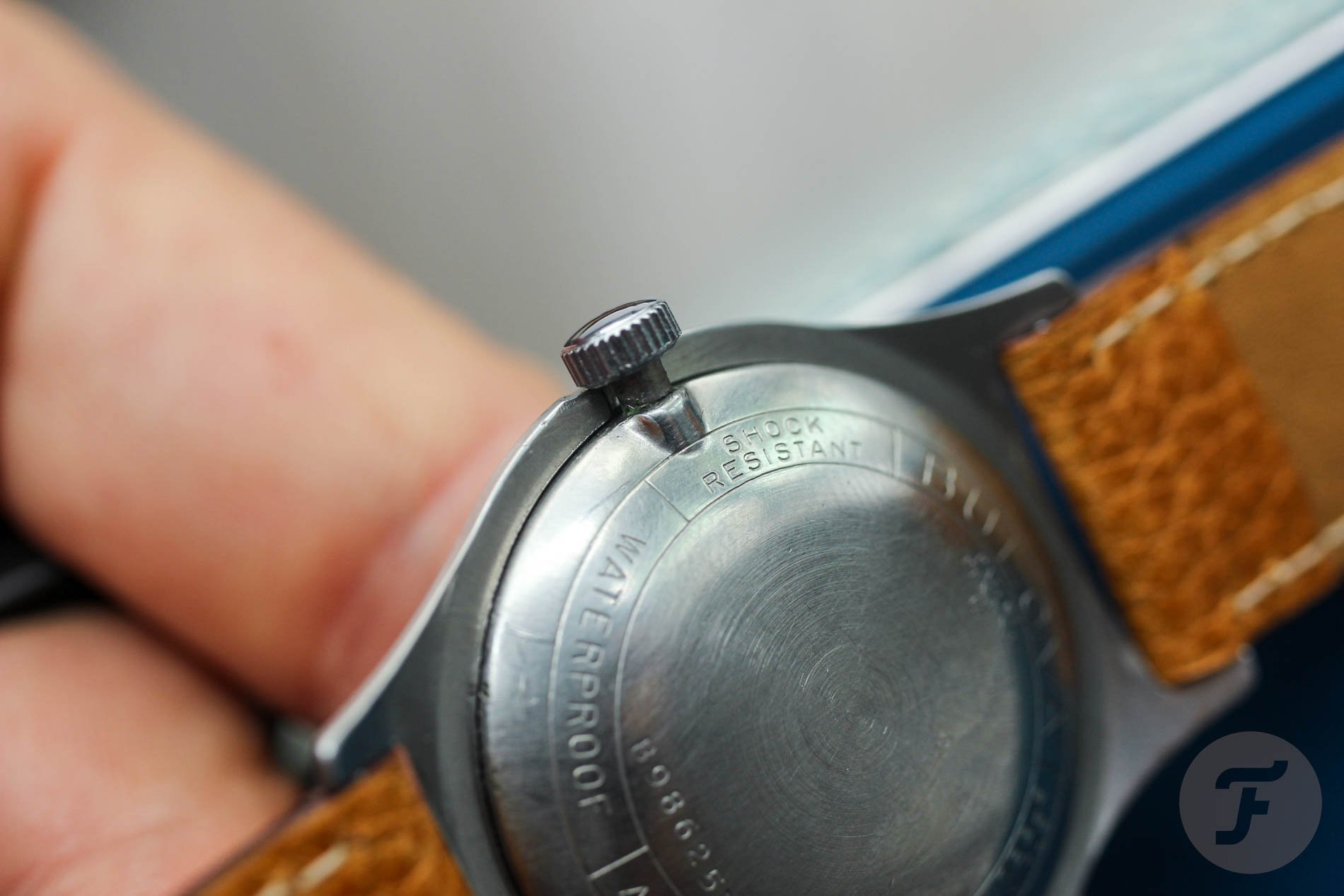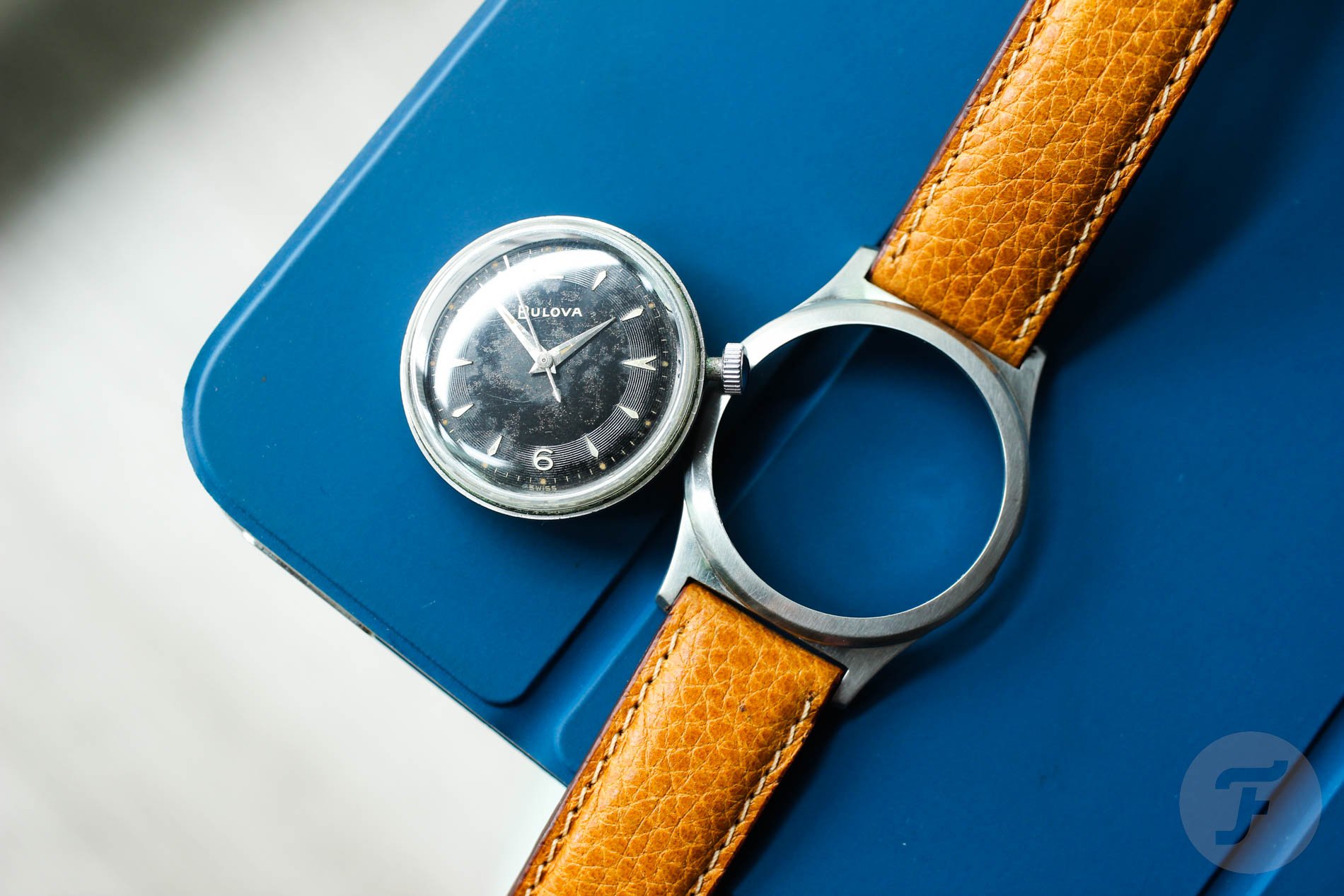#TBT The Unusual Waterproof Case Patented By Bulova In The Late 1950s
It has been maybe six years since I picked up this tiny Bulova on a business trip to Budapest. After finishing my meetings, on my way to the train station, I stopped at my favorite vintage watch shop. As I always do, I asked for something unusual…
The owner picked up a black-dial Bulova, which didn’t seem to be anything special besides the super-thin lugs and unusual case back. I didn’t have much time to think about it before, suddenly, the shop owner pressed on the crystal, and the case back popped out…along with the movement, dial, and crystal! He was standing in front of me with a “capsule” in one hand and an outer case in the other. The outer case was nothing more than a thin bezel with a pair of thin lugs integrated into it.
Back to the ’50s
Does that remind you of my beloved Clamshell case designs by Gallet? It sure does. This Bulova can be tricky for uneducated eyes. If I bumped into this watch in the wild, I admit that I could join the club of enthusiasts who scratched the case back when trying desperately to open it. On the Gallet Clamshell, there are four screws, and the case assembly is somewhat natural. But when looking at this Bulova watch from most angles, it’s not easy to understand how it stays together. Your eyes may be easily tricked. You may think you need to open it by wedging a knife blade between the case back and the case. Well, that’s not true!
A patented solution
This Bulova features a waterproof casing system invented by Emil E. Fachon. The patent application was filed on April 14th, 1954, and was approved under number 2,871,654 by the United States Patent Office nearly five years later on February 3rd, 1959. As the patent diagrams show, the case includes raised rings that the crystal fits over. The crystal has corresponding grooves that align with these raised rings, ensuring a tight fit.
This secure fit is further enhanced by an additional ring inside the crystal, which tightens it against the case and provides extra strength. The extremely tight fit puts even more pressure on the module when it is placed into the outer case or bezel. Although I haven’t tested it, this “capsule-type” casing seems quite effective.
The crown and stem
I know from Gallet Clamshell watches that fixing stems and crowns on them is difficult due to their construction. This Bulova is no different. It requires a special split stem that can be separated to remove the movement from the case. I finally located an original Bulova-signed crown, so now it’s time to get it swapped out. The crown incorporates a thick rubber gasket that fits snugly into the crown tube. The crown tube itself is one of the details I like to look at. As the case back has a bowl-like shape, the crown tunnel does not hide within the case mass but sticks out instead.
Understanding the stamping for production years
Looking more closely at the case back, you can see that “L7” is stamped under “Patent Pending.” In 1950, Bulova began using a coding system consisting of one letter and one number. The letter represents the decade, while the number signifies the specific year within that decade. The decade codes are as follows — L for the 1950s, M for the 1960s, N for the 1970s, P for the 1980s, and T for the 1990s. For example, my watch is stamped with the code L7, which means that the watch was produced in 1957. That was two years before the patent office granted Bulova the patent.
The dial
There is not much happening there. The dial is pure beauty, although it has deteriorated slightly over the last 67 years. The dauphine hands suit the carefully crafted hour indexes quite well. I particularly like the spade-like counterbalance on the central seconds hand. The Arabic numerals marking 12 and 6 o’clock give the dial a light, sporty feeling. If we zoom even further in on the dial, we can also recognize my favorite detail — hour markers connected with a set of groves. To me, this makes the indexes look like notes on a musical score.
Last thoughts
This Bulova is only about 34mm in diameter, but it does not feel lost on the wrist. The case structure makes it feel flatter than one would xpect. With its wafer-thin body, it easily slips under a cuff. I am unsure if this specific model has a name, but it wouldn’t surprise me if so. You can find the same case construction on the Bulova Phantom or Surf King models. If you like the idea of something unusual, you can get one of these for about €100. Happy hunting!
















